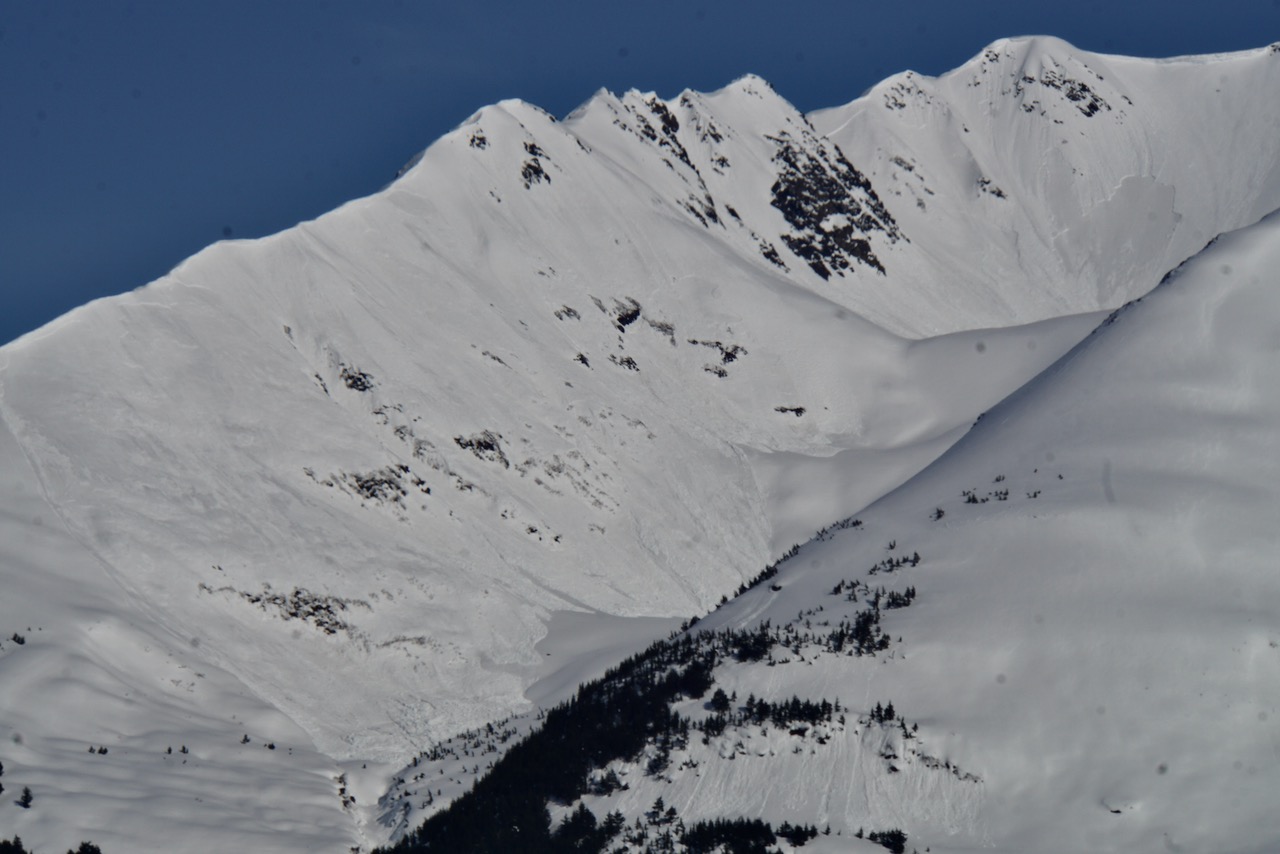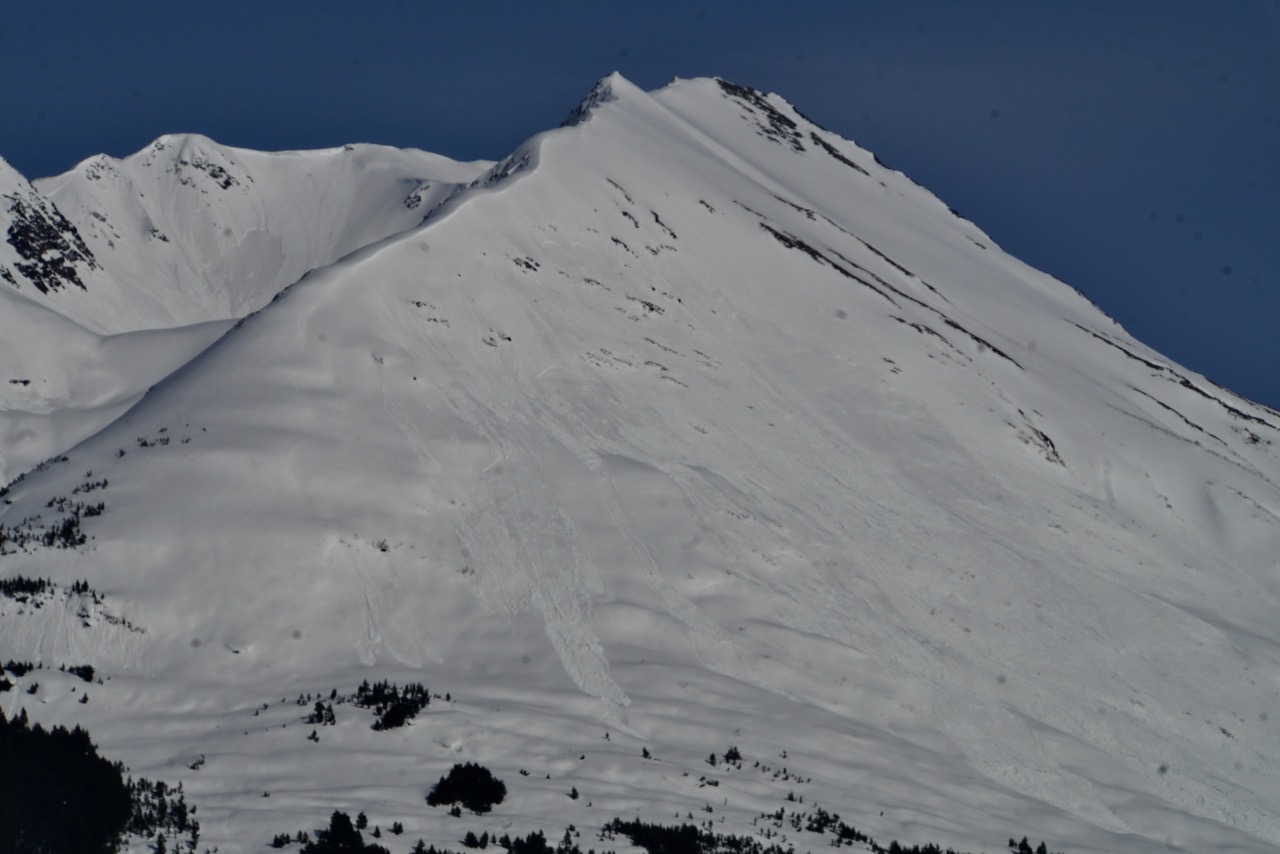Turnagain Pass
|
|
We have issued a SPECIAL AVALANCHE BULLETIN for the mountains surrounding Girdwood, Portage Valley, Turnagain Pass and the Kenai mountains to Seward. This bulletin is in effect until tonight. However, dangerous avalanche conditions are expected to continue into this week.
The avalanche danger is MODERATE this morning and expected to rise to HIGH again on east, south and west facing slopes today as intense sunshine and very warm temperatures melt surface crusts and destabilize the snowpack. Natural wet loose and wet slab avalanches will become likely during the heat of the day on slopes with direct sunshine. Human triggered slab avalanches are likely on sunny slopes (east, south and west aspects) with moist or wet surface snow. Northern aspects, shaded slopes, will have a MODERATE danger where triggering a slab avalanche 1-4′ deep, composed of last week’s storm snow, is still possible.
PORTAGE VALLEY, CROW PASS: There is potential for avalanche debris, from a slide occurring above, to run to low elevation terrain. Avoiding summer trails that run through avalanche runout zones, such as Byron Glacier and Crow Pass Trails, is recommended.
MONDAY AVALANCHE OUTLOOK: No avalanche forecast will be issued tomorrow. Similar avalanche conditions are expected on Monday, Apr 19th. Expect another day of warm temperatures, sunshine, and avalanches.
CNFAIC End Of Season Operations: Daily avalanche forecasts are ending today as our forecast season and funding winds down. We are switching to 4 forecasts/week (Tues, Thur, Sat, Sun). There is an avalanche ‘outlook’ posted for Monday and our next forecast will be issued Tuesday morning.
Hatcher Pass: Be sure to check out HPAC’s Saturday morning forecast at hpavalanche.org. The road to Hatcher Pass remains closed at MP10. For updates see AK 511 and follow AKDOT&PF on social media.
Chugach State Park: Rapid warming of the snowpack and dangerous avalanche conditions are being seen region-wide. Yesterday avalanches were reported at the Mile High trail head in Eagle River and an avalanche hit the Arctic Valley Road. A report was sent in from Falls Creek on Friday where several natural avalanches were seen in motion.





